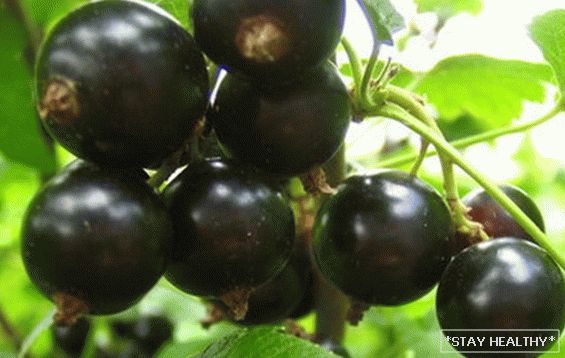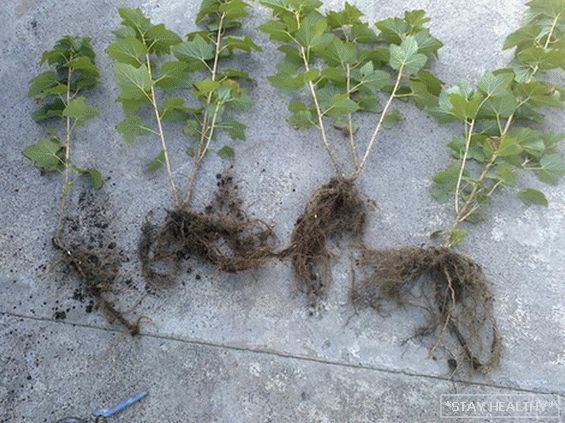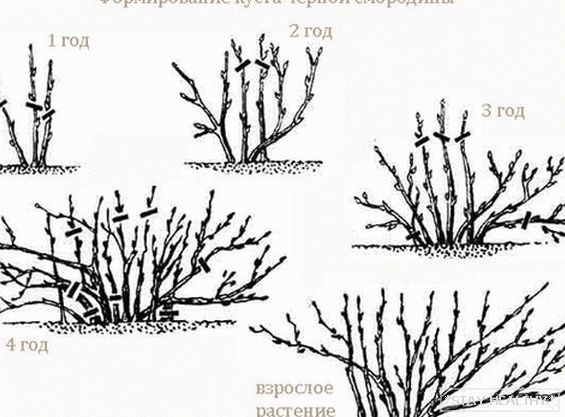 Пт, 20 май 2016 Автор: Евгений
Пт, 20 май 2016 Автор: ЕвгенийGrammatikati
Currant, without a doubt one of the berries growing almost on
each cottage and areas near the house.
This is a deciduous shrub, giving edible berries, capable
grow to a height of 1-2 m depending on the type.
The berries of this plant can be different colors – black
colors, yellow, white or red fruits.
Besides the fact that currant berries have excellent taste, they are very
beneficial to the human body, it is often used in various
recipes of both traditional and official medicine.
There are approximately 140 species of this plant growing throughout
the world.
Contents
Currant: species
Черная смородина. This type of plant is grown
on private plots more often. This currant is very
fragrant berries, they contain many trace elements and vitamins
A lot of vitamin C. Many different varieties of this
cultures differing in size, shape, taste and weight
berries, resistance to pests and diseases. Using black pollination
currants are related species, breeders have created many different
species of this culture without pigmented particles. As a result, there were
bred – golden, pink, red and white currants, which
differ in color and taste of berries.
Красная смородина. The bush grows up to
two meters, fruit – spherical berry red. This plant
in terms of distribution and number of cultivated varieties, only a little
loses black. Red currant rather unpretentious
culture
Белая смородина. Subspecies of red currant,
only there are no red dyes. Varieties have this
varieties of currant bred less than the above
varieties but it is also popular and
gardeners.
Розовая смородина. Kind of red
currants, in which the fruit is painted in a beautiful pink color,
The main advantage of this type is a pleasant dessert taste.
Золотистая смородина. It is imported from North
America, straight bush grows to two meters from the decorative
crown. They grow large berries from light yellow to
brown sweet and sour taste. Berries upon reaching
ripeness, hang on the branches for a long time, without crumbling, look resistant to low
temperatures, likes sunlight, but withstands a slight
shading, among all currants is the most drought-resistant species. For
good fruiting should be planted next to pollination
several bushes. Used not only for harvesting berries,
but also when arranging hedges, as an ornamental plant
thanks to the beautiful foliage in the autumn period. Shrub can
give almost any shape, golden currant is excellent
withstands haircut.
Currant: varieties
Белорусская сладкая. Samoplodny grade, gives
large berries. Resistant to anthracosis and kidney
tick.
Боскопский великан. Medium early variety, plant
sprawling medium size. The berries are large, sweet and sour, in
the base of the sheet has a noticeable notch.
Валовая. Late-ripening variety, gives very berries
large in size, weighing up to 5 g. Stacks to fungal diseases.
Кент. Late season, cysts are low,
slightly sprawling, berries are large, sourish, high-yielding
grade.
Московская. Winter-hardy, self-fertile,
early ripe with large berries variety, average yield. Racks to
kidney mite and terry.
Памяти Потапенко. Plant of medium height,
sprawling, the berries are large and tasty, the yield is average. High
resistance to ticks and fungal diseases.
Сокровище. Mid-season variety, low bush
small volume, gives large, tasty berries.
Чародейка. Mid-season variety, large bush
gives a shiny, large berries, dessert taste. Elevated
стойкость к вредителям и болезням, урожайный grade.
In addition to these, there are many more varieties of black
currants.
Currant: landing
Black currant propagates by layering (this plant is in short
the term grows new roots on the shoots covered with earth),
cuttings, dividing the old bush, quickly rooted green
черенки currants. But it is better to plant it in the autumn, in the spring
the plant will take root well and start growing.

Blackcurrant cuttings
Fertile soil is better for planting black currants, better
altogether with weak alkaline reaction, optimally suited for this
lightweight loam cultures. Planting currants preferably produces
on well-lit areas, but a small shadow is acceptable (berries in
the shadows will contain less sugar and the yield will decrease slightly).
Soil on the site before planting bushes dig up and make
fertilizer. Between the individual bushes enough to leave
space about 1.5 meters. For корневой системы выкапывают яму
diameter 50 cm and 40 cm deep. It is poured half a bucket of water,
when the plant is planted, it is watered additionally
a semi-bucket of water and the soil under the bush is mulched with peat or
rotted humus. Currant roots are close to
surfaces, for this reason they are sensitive to moisture
soil surface. But stagnation water should not be.

Currant saplings
Currant: care
This culture during flowering and formation of ovaries needs
in foliar top dressing.
The basic rules of care, you must:
• Loosen the soil under the plants regularly;
• Exterminate weeds;
• Add fertilizer to the soil;
• Remove dried branches;
• Plant young ones instead of old bushes
• Destroy pests and fight diseases.
In the spring, after melting snow, the roots of the bush begin to vigorously
grow, it may not be enough moisture and nutrients.
Watering plants need only warm water, often gardeners
currant bush is poured over the top, resulting in constant moisture on
leaves can cause powdery mildew.
During the summer period it is necessary to maintain the soil in
loose condition, but note that the loosening is done carefully,
so as not to touch the roots are often at a depth of 3-5 cm. If
pour a 5 cm layer of mulch from organic material, you can not
loosen the soil under the bushes. While young people are growing in the dacha garden
trees, currant bushes need pritenyat from direct rays
summer sun (in nature currant grows in partial shade, plants
badly withstand the heat).
Pruning
After planting the plants to a permanent place, the bush is immediately cut,
leaving 2-3 developed buds on branches. The next season is removed
all weak and undeveloped shoots, grown small shoots. On the bush
leave no more than 4 powerful and developed shoots that
subsequently become skeletal branches. At the age of three years on
A lot of first-order shoots appear in the currant bush
most of them cut out, leaving the top five of them. At 4-5
year plant should have 15-20 skeletal branches that need
annually crop.

Pruning
Currant grows and yields different varieties of crops in different ways.
For this reason, according to the method of pruning plants are divided into 3
groups.
1. Varieties of the first group, annually produce a lot from the root
zero shoots that weakly branched. For this reason, this
the shoots are very pruned, which significantly increases the branching,
4 year old branches are completely removed.
2. Varieties of the second group, weakly forms zero order shoots,
but their branches are well branching. For this reason, they have
not easy to create a bush with the required number of shoots of different
age To eliminate this disadvantage, zero shoots from such
plants are almost not cut, and to enhance the formation of a new
overgrowths regularly remove old branches (aged 5-6 years) and
shells cut on them.
3. Varieties of the third group – intermediate between plants of the first
and the second group, they grow the average number of young shoots and
medium branch. Shoots bear fruit for a long time (approximately 6
years), they are pruned just like plants of the second group, only more
shorten shoots.
Смородина: diseases
Махровость. Common black disease
currants. The plants on which this disease has strongly developed,
stop giving berries. The disease gradually spreads to
healthy branches of the bush, and on the same plant may be present
both healthy and diseased flowers. On sick bushes
bloated buds can often be found – a sign of presence
kidney mite, which spreads terry. Sick
plants recover very rarely, the disease annually
progresses and the bush becomes completely barren. Such
Plants need to uproot the garden and destroy.
Антракноз. This is a fungal disease of currants, her
can be detected by the appearance on the leaflets of small
specks of brown color. Leaf fabric in time acquires brown
color, the sheet begins to dry and falls.
This disease affects such parts of the plant as:
• Fruits;
• Young shoots;
• Leaf petioles.
Anthracnose does great harm after mid-summer, especially for
mature leaves. Wintertime mushroom spends on fallen patients
leaves. The disease is transferred with water, occasionally spreads.
through insects.
Fighting disease:
1. In the autumn after the leaves have been circled on their bushes and the soil under
they are treated with a 3% solution of nitrafen;
2. In the summer period for processing using colloidal sulfur 1% and
suspension kuprozan. Processing is carried out before flowering, again
sprayed after the plants bloom, again after two
weeks after the second treatment and the last time after harvesting.
Can be applied for spraying Bordeaux liquid concentration
one%.
3. Agrotechnical methods of struggle consist in thinning thick
planting, extermination of weeds, digging the soil under the bushes,
destruction of leaves showered with plants.
Currant: pests
Почковый клещ. One of the most malicious
currant pests, greatly enlarged buds – a clear sign
the appearance of the kidney tick. These buds in the spring
bloom and loosen up in such a way that they appear
disfigured leaves, after a while the buds die, which becomes
cause a significant decrease in yield. Every sick kidney can
contain thousands of ticks. In addition, this pest carrier such
diseases как махровость.
Fighting pest:
1. Removal of infected shoots in early spring;
2. Treatment of bushes during the formation of inflorescences suspension
colloidal sulfur (75 g of the drug per bucket of water);
3. Spraying of withered bushes with lime-sulfur infusion;
4. Treatment of plants after flowering with 0.5% ether sulfonate.
Смородинная тля. Pest can be detected by
twisted and shriveled young leaves on their underside
many light green larvae are noticeable.
Fighting pest:
1. Before the buds swell to destroy the plant pest eggs
treated with 3% nitrafen;
2. Processing currant chlorophos (concentration on a bucket of water 20
g of the drug) with the addition of trichlormetaphos-3 (20 g);
3. When aphids appear, treatment of plants with a 0.2% solution of 0.4% soap
and anabazine sulfate.





